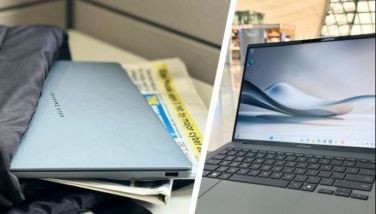Of murals and pedicabs: From museum to eskinitas
MANILA, Philippines – Not fully knowing what to expect from the ongoing exhibit, I opened the imposing transparent doors, highlighted by small floral prints that crept aimlessly. A ubiquitous sign simply read Michael Lin: Locomotion, and I instinctively looked right.
To my surprise, it seemed to be just another empty whitewashed wall. However, upon closer observation, faint petal sketches done in pencil, snaked all the way up to the ceiling, unyielding to the change of the resourceful use of medium, from clear glass to solid concrete.
Moving along, before me were three consecutive distinct blooming murals, each one getting more intricate — from the basic coats, to the highlighted portions, and finally, complete with all the details — which boasts a masterful craft that reflected the inner workings of the artistic process.
I was astonished with its monumental, definitely larger-than life, site-specific installations of botanic designs.
As I ambled through the halls of the De La Salle-College of Saint Benilde’s School of Design and Arts’ Museum of Contemporary Art and Design (MCAD) — a showroom for world-renowned talents, who collaborate with local and international professional artists and curators — I was caught off guard with what happened next.
As if right on cue, several honest-to-goodness, fresh-off-the-streets pedicabs emerged — apparently out of nowhere — all sporting similar patterns akin to the walls. The great-hearted riders, proud owners of the now newly-facelifted padyaks, gamely circled around three multicolor banners ad infinitum — made out of old used canvasses that have been weaved and raised on towering poles.
This allowed the intrigued museum-goers a rare opportunity for a closer inspection, which evoked genuine admiration. But before we could even share complimentary remarks, they quickly vanished from our sights. We later learned that the ever-fleeting, missing murals on wheels, soon blended into the busy avenues, crowded streets, and hard-to-reach eskinitas once again.
It gave us a surge of nationalism to see such an unassuming symbol of Filipino transportation and livelihood, now decked in new skins, captured everybody’s heart.
As luck would have it, I bumped into the Curator, Yeyey Cruz, and an amiable man in simple cream laced sneaks sans socks, khaki slacks, pink button-up shirt, and black-rimmed spectacles, the artist and exhibitor himself, Michael Lin, who graciously toured us around arguably the Philippines’ only international contemporary gallery.
I soon found out that the Tokyo-born painter, spent his formative years in Los Angeles and Taiwan, and completed a Master of Fine Arts degree from the Art Center College of Design in Pasadena, California, USA.
Internationally known for creating massive projects that reconfigures public spaces into never-before-perceived concepts, such as tournament-sized tennis courts and towering atriums of luxury hotels, he has likewise reactivated locales in Portugal, France, Japan, China, and the USA by using ornamental patterns, which has retained its architectural integrity.
“Why the pedicab? Why not the traditional kalesa or the iconic jeepney?” I inquired.
“As I ventured from the Bayleaf Hotel in Intramuros during my previous visits to the metropolis, I was fascinated by all these bike-esque vehicles scampering around,” Lin recalls. “Since I have started to ride a bicycle, as a mode of sustainable and revolutionary transportation in Shanghai, my present home base, I took a hard look at mobility,” he continues.
“The traditional kalesa would have been too nostalgic, and the iconic jeepney would have been too cliché. The choice of the pedicab is actually an engagement with the urban contemporary,” Yeyey adds to the revelation.
“Inspired, enthused and motivated, we delved into more research. We talked to the Barangays 733, 730, and 752 around the vicinity of the college campus, together with the driver’s association, commonly known as todas. We had to find a certain kind of vernacular language and use that as a tool for engagement — and the pedicab was exactly what we needed,” Lin reveals.
By adorning the familiar motorcycles with sidecars with the same iconography as the painted blocks within the studio, these metaphorically and physically extend the subculture of folk arts to other sections of society who cannot normally participate in such opportunities.
“Lin has brought his passion into a community beyond the ‘sell-by’ date of the actual run of the presentation, and whose art will continue to be part of the neighborhood. Michael breaks down the barriers between institutions and localities, between the site-specificity and cultural landscape,” a beaming Yeyey reminds.
Michael Lin: Locomotion closes on May 21 at the Museum of Contemporary Art and Design, G/F Benilde School of Design and Arts Campus, Dominga Street, Malate, Manila. The exhibit is open from 10 a.m. to 6 p.m. on Tuesdays to Fridays, and 10 a.m. to 2 p.m. on Saturdays. For more information, visit mcadmanila.org.ph.
- Latest
- Trending


























 Exclusive
Exclusive


